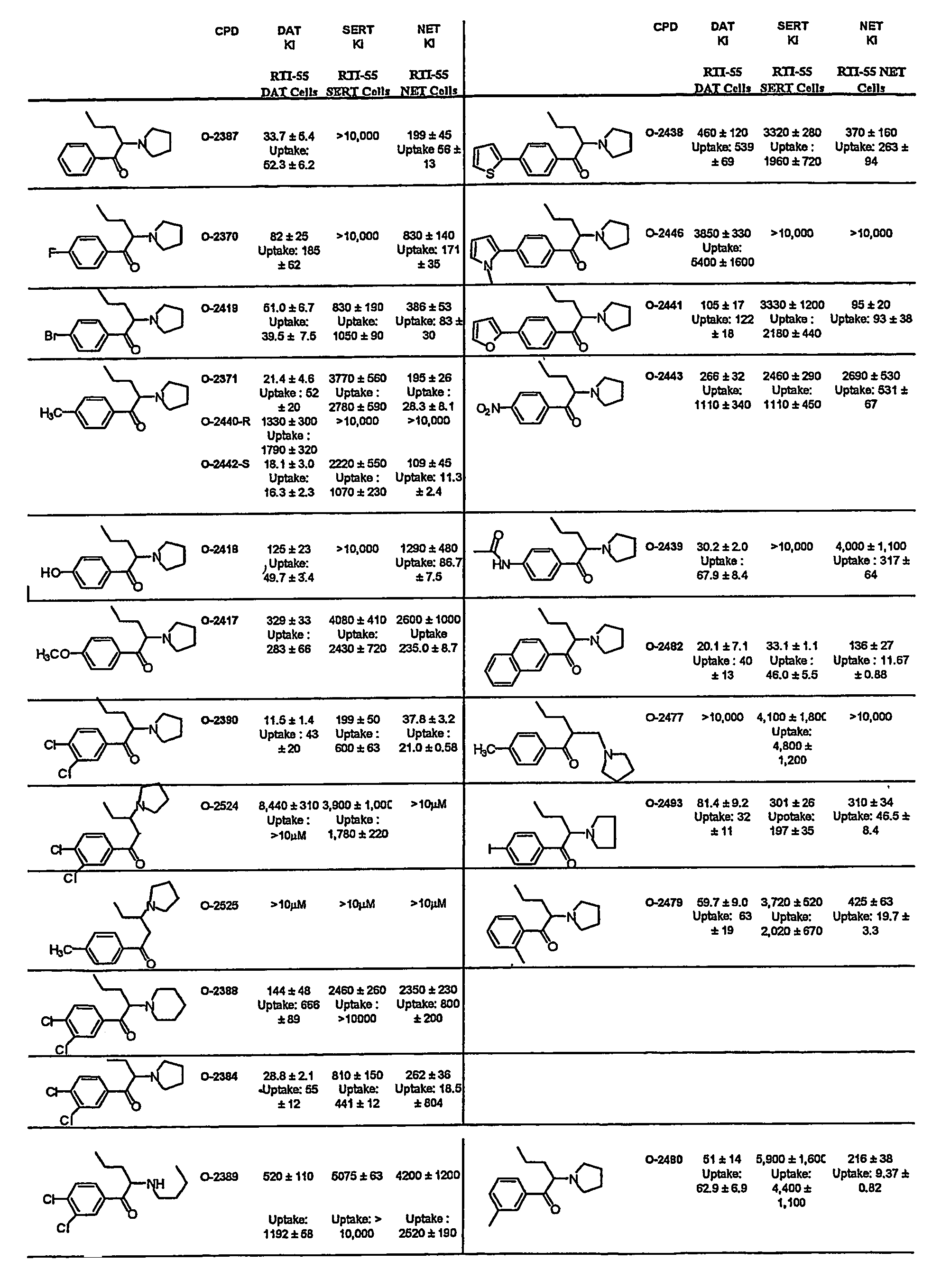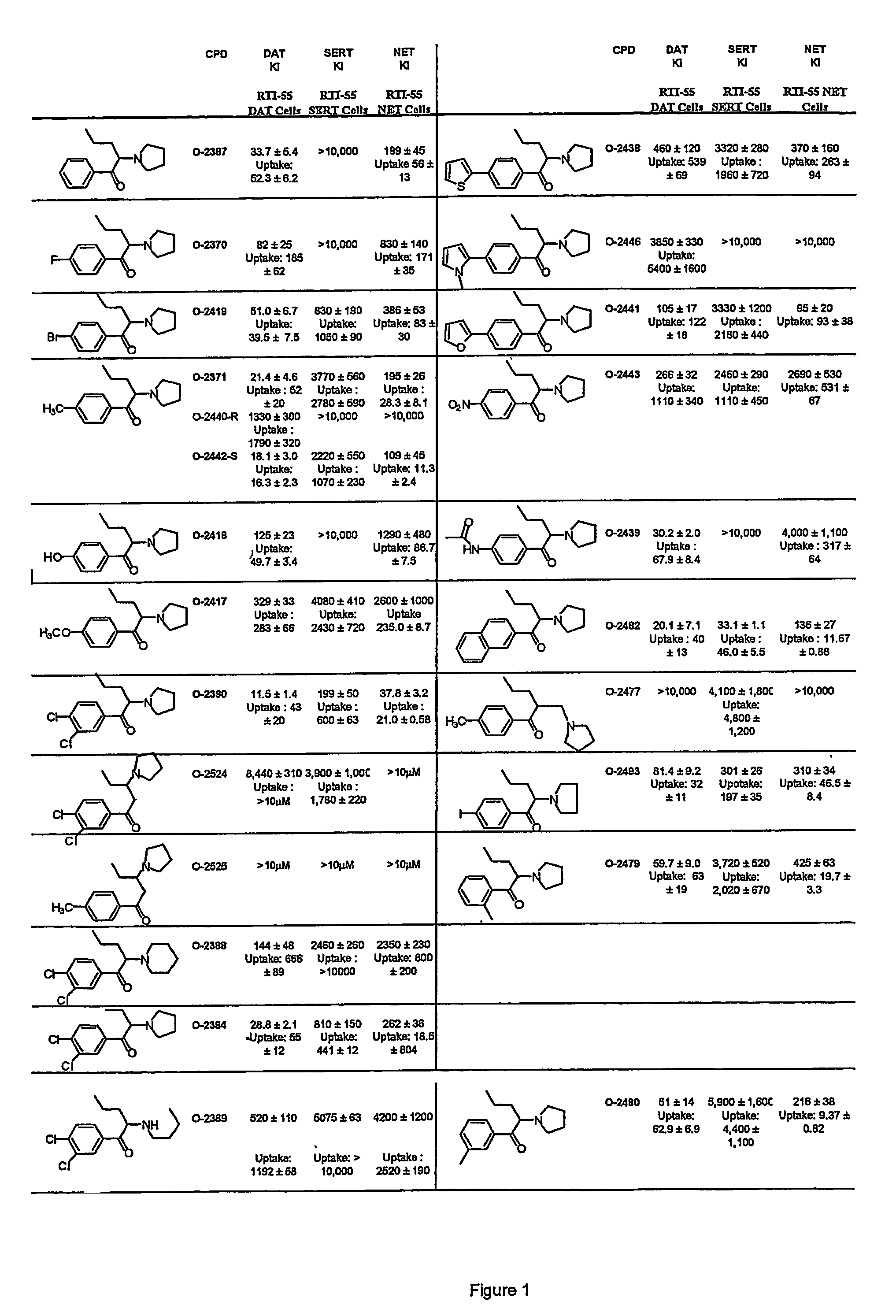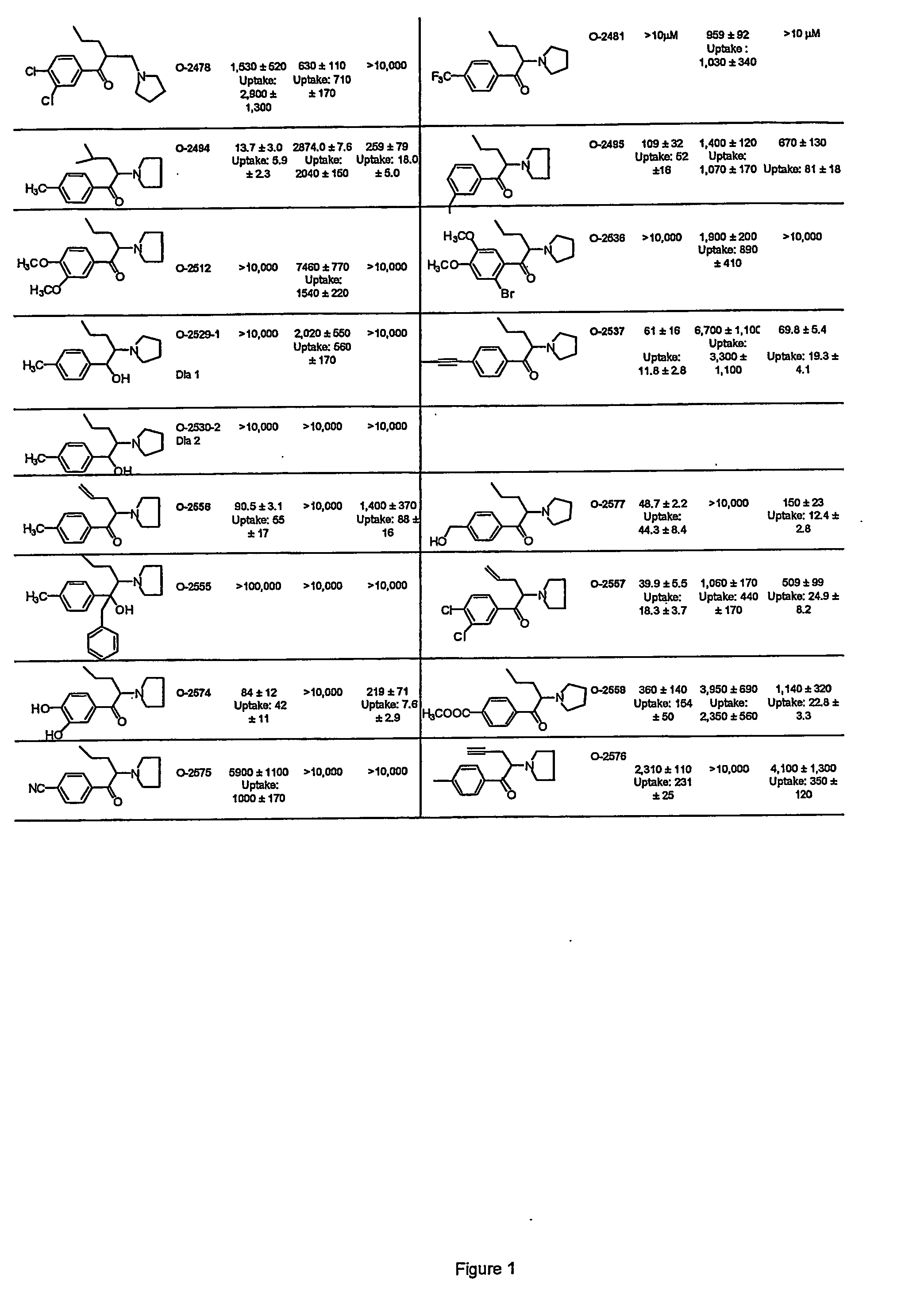Pyrovalerone Analogues and Therapeutic Uses Thereof
- Summary
- Abstract
- Description
- Claims
- Application Information
AI Technical Summary
Benefits of technology
Problems solved by technology
Method used
Image
Examples
example 1
[0086]1-(3,4-Dihydroxy-phenyl)-2-pyrrolidin-1-yl-pentan-1-one, hydrogen bromide salt. 1-(3,4-Dimethoxyphenyl)-2-pyrrolidin-1-yl-pentan-1-one (1.50 g, 4.6 mmol) was freed from its hydrogen chloride salt by treatment with aqueous Na2CO3 and extracting into CH2CI2. The organics were dried (MgS04), filtered, and reduced to a pale yellow oil in vacuo. The oil was taken up in CH2Cl2 (10 mL) and cooled to −78 ° C., whereon BBr3 (46 mL, 1.0 M solution in CH2Cl2, 46 mmol) was added dropwise over 0.5 h. The resulting yellow mixture was warmed slowly to room temperature and stirred for 3 h. The yellow solution was hydrolyzed cautiously by addition of aq. Na2CO3 (20% solution) until the pH was 8, then water (50 mL) was added and the solution was allowed to stand overnight. Neutral organics were extracted from the mixture by separation of the CH2Cl2 layer which was then discarded. The aqueous layer was acidified to pH 3 with 1 M HCI, most of the water was removed by rotary evaporation, and the r...
example 2
[0087]4-(2-Pyrrolidin-1-yl-pentanoyl)-benzonitrile, hydrogen chloride salt. This compound was prepared, in 70% yield, as described in General Procedure A, with slight modifications; Mp 197-199° C. (dec.); 1H NMR δ 10.9-10.7 (br, 1H), 8.24 (d, 2H), 8.14 (d, 2H), 5.7-5.55 (br, m, 1H), 3.7-3.6 (br, m, 1H), 3.6-3.5 (br, m, 1 H), 3.3-3.1 (br, m, 2H), 2.1-1.8 (m, 6H), 1.4-1.2 (m, 1 H), 1.1-0.9 (m, 1 H), 0.77 (t, J=7 Hz, 3H); 13C NMR δ 196.2, 137.5, 133.2, 129.4, 117.9, 116.6, 67.8, 53.7, 51.9, 31.3, 22.9, 17.2, 13.7; APCI MS m / z 257 (M+1); Anal. (C16H21ClN2O.¼H20) C, H, N, Cl.
example 3
[0088]2-Pyrrolidin-1-yl-1 p-tolyl-pent-4-yn-1-one, hydrogen chloride salt. 2-Pyrrolidin-1-yl-1-p-tolyl-ethanone, (25 g, 104 mmol) was freed from its hydrogen chloride salt by treatment with aqueous Na2CO3 and extraction into Et2O. The organics were dried (MgSO4), filtered and reduced in vacuo to a yellow oil. This oil was taken up in toluene (200 mL), and NaNH2 was added to the stirring solution which was subsequently heated to approximately 120° C. (oil bath temperature) for 0.5 h. Propargyl bromide (13 mL, 80% w / w solution in toluene, 14 g, 115 mmol) was added to the resulting cooled (oil bath temperature at approximately 100° C.) orange mixture at such a rate that steady reflux was allowed to occur with concomitant NH3 evolution. Upon complete addition (0.5 h), the mixture was cooled slowly to room temperature and was then hydrolyzed cautiously by addition of water (100 mL). The toluene layer was separated and the aqueous layer was extracted with toluene (2×50 mL). The combined o...
PUM
 Login to View More
Login to View More Abstract
Description
Claims
Application Information
 Login to View More
Login to View More - R&D
- Intellectual Property
- Life Sciences
- Materials
- Tech Scout
- Unparalleled Data Quality
- Higher Quality Content
- 60% Fewer Hallucinations
Browse by: Latest US Patents, China's latest patents, Technical Efficacy Thesaurus, Application Domain, Technology Topic, Popular Technical Reports.
© 2025 PatSnap. All rights reserved.Legal|Privacy policy|Modern Slavery Act Transparency Statement|Sitemap|About US| Contact US: help@patsnap.com



